Post by FOTH on Sept 19, 2011 9:01:23 GMT -6
Balm of Gilead Salve
An anti-inflammatory, antibiotic and pain relieving salve made from cottonwood or poplar buds
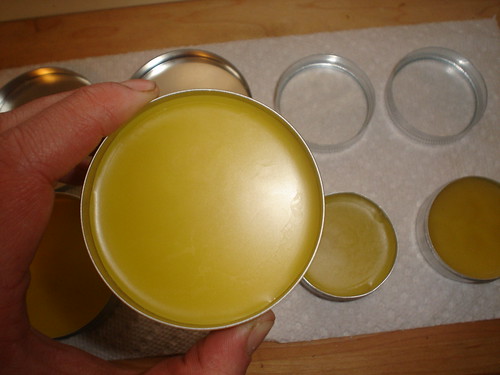
The buds of a number of varieties of cottonwood and poplar trees (Populus nigra, Populus balsamifera, Populus augustafolia and others) contain a sticky orange resin that has been used for centuries to make a soothing, healing salve commonly known as “Balm of Gilead.” This salve has anti-inflammatory, antibiotic/antiseptic and pain relieving qualities, and has been effectively used to treat abrasions, minor burns, frostbite and to ease the pain of sore muscles and joints. It is also (sometimes known as Black Salve) a traditional skin cancer remedy.
The months between December and March are, depending on your location, best for harvesting the buds.
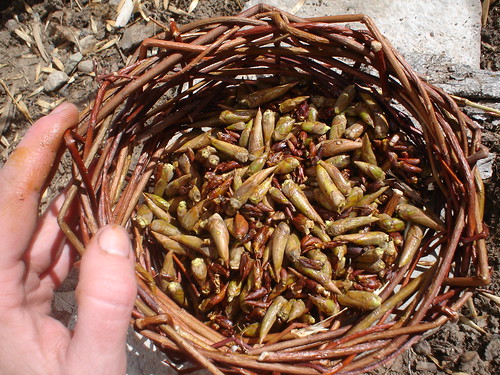
The buds must be collected, of course, before the leaves emerge, and if you wait until too late in the spring, you may end up with more of the sticky orange sap on your fingers than not! Cold days are best for collecting the buds; anything below freezing will do. Best of all is to find a fallen branch or two, as they will be easier to reach and will not damage the tree, as taking too many buds from a living branch can do. If you cannot find a fallen branch, go ahead and harvest from the living branches you can reach, but take selectively, a few here, a few there, so as not to damage the tree by preventing entire branches from leafing out.

Once you have collected the buds, you can either use them right away, or they can be dried or frozen for later use. If you choose to dry them, make sure they are spread out in a single layer on a board or cookie sheet, as they will tend to mold pretty quickly if left in heaps and allowed to retain moisture. Freezing really is the best way to preserve them, if you’re not ready to make your salve right away.
There are several ways to extract the resin from the buds for making Balm of Gilead salve. One is done by slowly simmering the buds in hot oil to release their resin, and the second, which takes longer but yields a slightly more potent finished product, involves placing the buds in a crock or jar, and covering them with oil, leaving them to “steep” for a period of several weeks to a year. The resin can also be extracted by soaking the buds in alcohol for several weeks, the results combined with oil and simmered to drive off the alcohol, but I have found the oil itself to be sufficient for extraction.
Simmering method:
Cover buds with oil--olive is perhaps the best, but coconut and others can be used--and simmer gently (do not boil!) to release the sticky orange resin. Cool and strain.

Gently simmering cottonwood buds in olive oil for several hours. You can see the yellow-orange resin beginning to ooze out of the buds as the oil heats.
Steeping method:
Fill a mason jar or crock halfway with buds, cover with olive oil and set aside. A sunny windowsill or warm spot in the kitchen speeds up the process. Leave in place for at least two weeks, but there is really no such thing as leaving it too long.
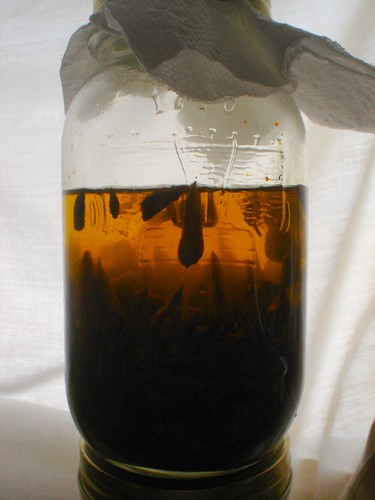
Making the salve:
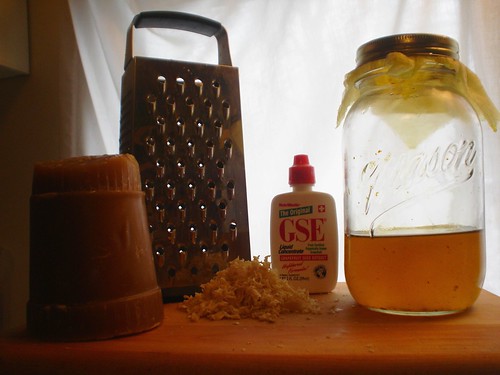
Ingredients: Bee's wax, grapefruit seed extract, cottonwood bud oil
I find that a ratio of 1/1 by volume of oil and wax shavings generally works well.

Equal measures (approximately) of wax shavings and oil, by volume
Heat the oil just to lukewarm, and add the wax. Do not boil. Stir with a wooden stick or, if you must use metal, with stainless steel.
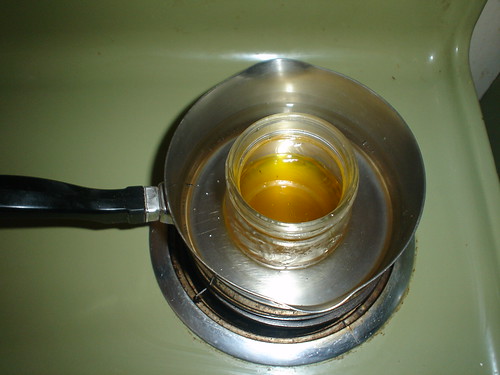
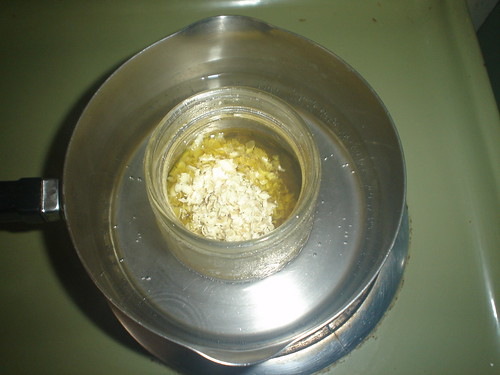

Set out your containers. Almost anything will work, from "jelly" sized mason jars to Altoids tins to these salvaged air gun pellet containers I'm using (on left.)
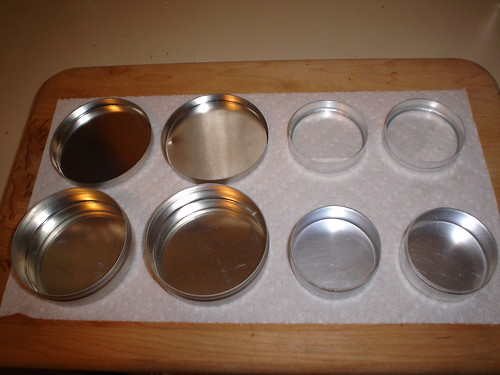
Before pouring into the containers, put a bit of the salve on a spoon and refrigerate it for a few minutes (or just set it out on the counter, if your house is as cool as mine…this sample hardened shortly after contacting the spoon) to make sure that the finished texture will be alright. It is much easier to add either wax or oil to the mix now, than it will be to later dig the salve out of containers and modify it.
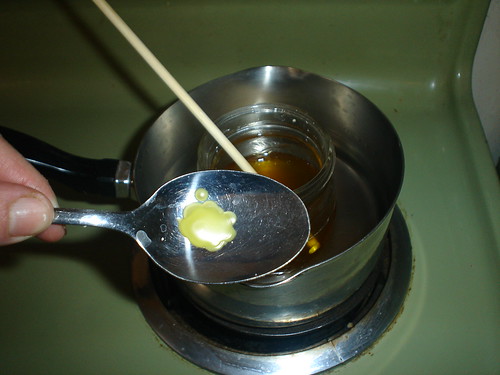
I added two drops of grapefruit seed extract to this batch, a preservative and to increase the antiseptic/antibacterial value of the salve. This step is optional.

Pouring into the tins...

Freshly poured...a wonderful yellow-orange color:
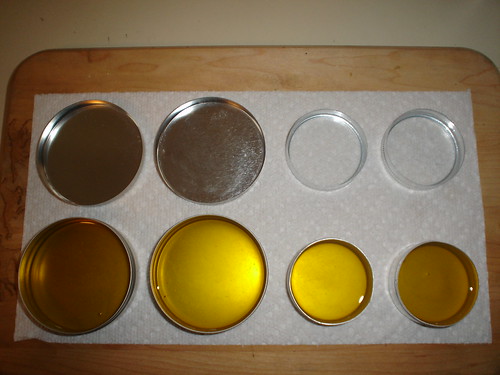
Checking the texture again...just right!

Solidifying takes only minutes in a cool house, longer if the weather is warmer:

All done and ready to use. A very versatile salve that can be used in place of antibiotic ointment on minor cuts, abrasions and burn, helps treat frostbite (have tried that...) and works wonders on dry, chapped hands and cracked fingers and toes.

This is the simplest version. Some possible additions could include lanolin, vitamin E oil or coconut oil, all of which slightly change the properties and texture of the salve. Experiment with small batches, and learn what works best for you!




